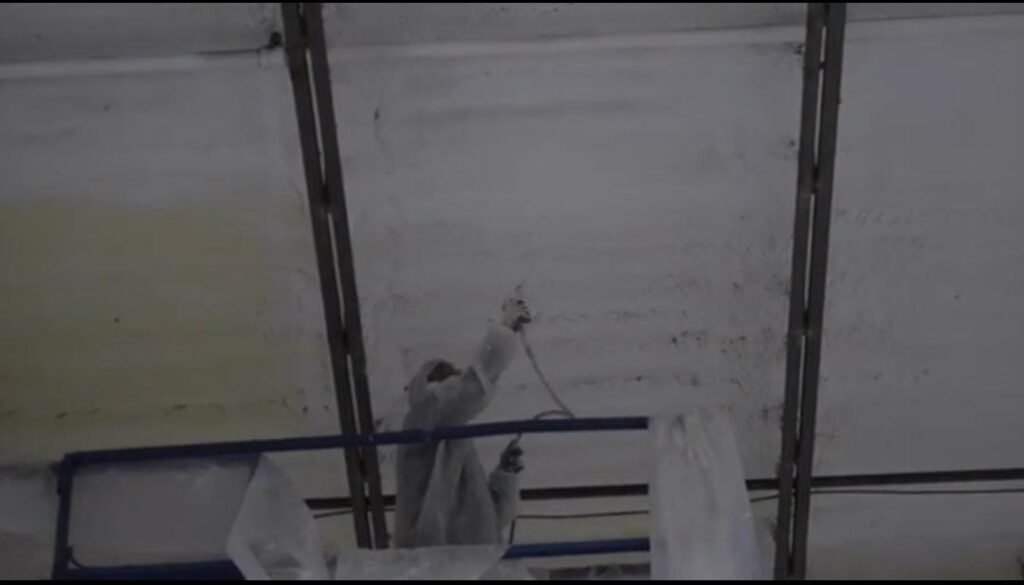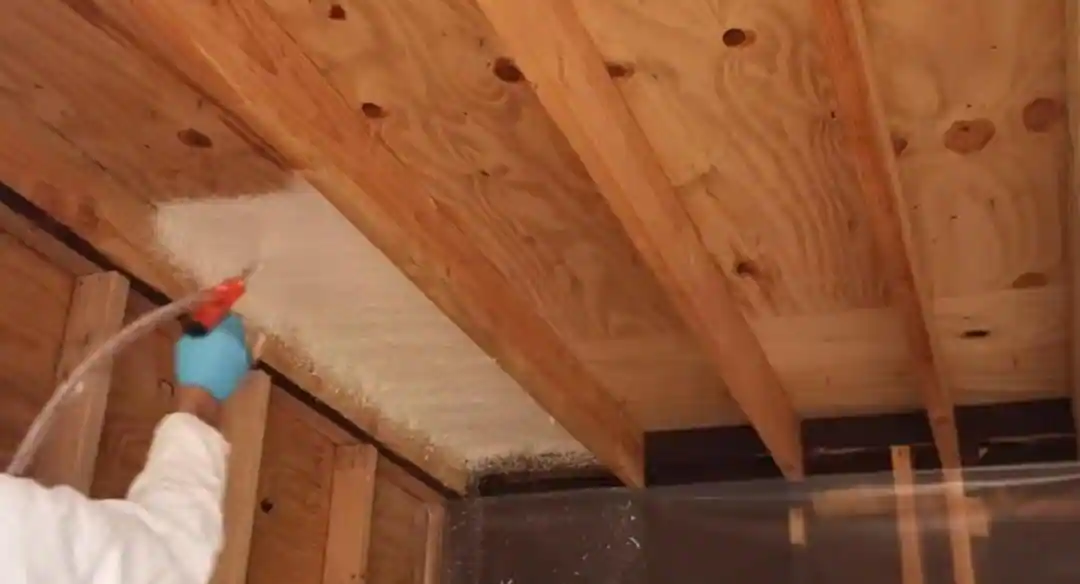Benefits Of Spray Foam Insulation In Attic – A Comprehensive Guide to Enhancing Cosiness and Effectiveness with Spray Foam Insulation in Attics
Insulating an attic is essential to maintaining a warm and energy-efficient home. Because of its special advantages, spray foam insulation is one of the most widely used insulating techniques. This comprehensive and informative study at the end can correctly examine the advantages of spray foam insulation for attics, covering everything from application to removal considerations, as well as the pros and cons of this cutting-edge insulation technique, so, for getting the information just read the whole post. Let’s start the post-
First, let’s try to comprehend insulation using Spray Foam. Spray foam insulation is a multipurpose material that fills spaces and forms a smooth barrier against heat transmission when applied. There are two primary varieties: open-cell and closed-cell. Closed-cell foam is thicker and offers a stronger insulating barrier than open-cell foam, which is lighter and less compact. This insulation can provide the best quality like, Lapolla Spray Foam Insulation Both varieties open cell spray foam and closed spray foam, work well in various situations, and the choice is affected by things like price, environment, and the type of insulation needed.
Benefits Of Spray Foam Insulation In Attic – Effectiveness of Energy Use:

The outstanding energy efficiency of spray foam insulation is one of its main advantages.
Energy Efficiency
The outstanding energy efficiency of spray foam insulation is one of its main advantages. By maintaining a tight seal, the material reduces the impact on heating and cooling systems by stopping air leaks. As a result, there is a reduction in carbon footprint and energy costs, the most important benefit we will get by using this material to insulate the attic.
Air Sealing Properties
Spray foam insulation seals gaps, fractures, and other openings in the attic structure to provide an efficient air barrier. To provide a more comfortable interior environment, this air sealing capacity is necessary for keeping the air that is conditioned from leaving and free air from entering the living rooms.
Moisture Control: benefits of spray foam insulation in attic
Wood damage and mold growth can be prevented by using spray foam insulation, which creates a barrier that is resistant to moisture. This is a particularly key advantage in attic areas where humidity levels can change easily and surely, it’s a bad effect, affecting residents’ health and the overall stability of the building.
Work Lasts a Long Time and is Durable
Compared with traditional insulation materials, spray foam insulation has a longer lifespan when done correctly. Long-term energy savings and a decreased need for maintenance or replacement are made possible by its durability.
Improved Insider Air Quality- Benefits Of Spray Foam Insulation In Attic
Spray foam insulation reduces the amount of dust, allergens, and pollutants that enter the house by sealing the interior. As a result of the durability of spray foam insulation, people living there, the health of the family members, and their well-being are improved by improved indoor air quality.
How To Spray Insulation In Attic / How To Insulate An Attic With Spray Foam

The following information will be helpful to you if you are considering insulating the attic by using spray foam insulation. You can insulate the attic with batts insulation, you may read the post, How To Install Batts Insulation In Attic, if not then click there. This guide will provide you with a step-by-step process about how to spray insulation in the attic or how to insulate an attic with spray foam.
Get Prepared – How To Spray Insulation In Attic

It’s important to prepare the attic area before adding spray foam insulation. These steps include cleaning up the space and area of the attic, removing any insulation that may be there, and repairing any leaks, cracks,or structural issues like flaws or framework.
Precautionary Steps
Following safety precautions is necessary when applying spray foam insulation. To protect the installer’s safety, protective clothing—such as goggles, gloves, and a respirator—should be used during the application procedure.
Setup of Equipment- How To Spray Insulation In Attic
Position the spray equipment following the manufacturer’s recommendations. Usually, this includes attaching pipes and making sure the two spray foam ingredients are properly mixed.
Procedure for Spraying
Starting at the furthest corner and moving towards the exit, start spraying the foam. Ascertain uniform coverage, paying particular attention to regions sensitive to air leaks.
Application Method
Professional equipment and machinery are usually used for installing spray foam insulation. The foam must be applied evenly or properly by the installation to ensure that all cavities and spaces are sufficiently filled. It’s essential to adhere to the manufacturer’s instructions for the particular product being utilized.
Let to Dry and Fix
The foam takes time to dry and fix and settle spray foam insulation after application. Depending on the kind of foam used and the surrounding conditions, the curing procedure could take a few hours to several days. It’s critical to limit entry to the attic at this time.
Expansion and Healing
Let the foam swell and harden. It could take a few hours for the foam to solidify and create a useful barrier for insulation all over this process. This step is the last step of spray foam attic insulation.
Attic spray foam removal
By using the following steps you will be successful in attic spray removal
Identifying the Need for Cleanup
Whereas spray foam insulation is long-lasting, there may be times when removal is necessary and required. Damage, repairs, or changes to insulation requirements could be the cause of this. The first stage in this process involves deciding when and where removal is necessary.
Expert Removal Services
Spray foam insulation removal can be difficult and requires specialized knowledge. The expertise and tools of specialized removal services enable the insulation to be removed effectively and safely without endangering the structure.
Taking the Environment into Account
It is important to dispose of removed spray foam insulation while keeping the environment in mind. While some foam varieties can be recycled, others might need to be disposed of in a way that has the least negative effects on the environment.
Spray Foam Attic Insulation Pros And Cons
Spray Foam Attic Insulation: Benefits and Drawbacks
Spray Foam Pros/ Spray Foam Benefits
Outstanding Insulating Properties
Compared to many conventional insulation materials, spray foam insulation offers better thermal resistance.
Air Sealing Capability
The material’s capacity to form an airtight seal improves indoor comfort and energy efficiency.
Moisture Resistance
By inhibiting the growth of mold and mildew, spray foam’s moisture-resistant qualities help create a healthier indoor environment.
Longevity- Spray Foam Attic Insulation Pros and Cons
Spray foam insulation can last for many years with correct installation, which reduces the need for replacements regularly.
Versatility
Spray foam is flexible to many forms and surfaces, which makes it suitable for attics with structural abnormalities.
Cons/ drawbacks
Cost
Compared to standard insulating materials, spray foam insulation may initially cost more, which could have an impact on the project’s ultimate budget.
Installation Complexity
It is advisable to leave the installation of spray foam insulation to professionals as it calls for certain knowledge and tools.
Curing Time
The spray foam insulation’s curing time can be a disadvantage since it can cause the project’s completion to be delayed.
Environmental Impact
Chemicals that may be harmful to the environment may be present in some spray foam insulation formulations. The disadvantage of spray foam is on selection of this insulation material for insulating the attic.
So, these all are pros and cons means the advantages and disadvantages of spray foam insulation.
Best Spray Insulation For Attic
To keep your house cozy and energy-efficient, ensure your attic is properly insulated. Because it is so adaptable and efficient, spray foam insulation has become one of the most popular types of insulation. The greatest spray insulation solutions for attics will be covered in detail in this extensive guide, along with information on advantages, how to apply them, and any possible disadvantages.
keeping your attic well insulated is essential to keeping your house cozy and energy-efficient. Because of spray foam efficiency and adaptability of insulation, this spray foam insulation has become one of the most popular and known types of insulation available. We will examine the top spray insulation choices for attics in this thorough guide, going over their advantages, how to apply them, and any possible disadvantages.
Knowing About Spray Foam Insulation
One type of insulation that is sprayed onto surfaces in a liquid form and subsequently expands and hardens into a foam is called spray foam insulation. It is renowned and well-known insulation for having excellent insulation qualities that produce an airtight seal to keep out air and act as a powerful barrier against heat input, gain or loss. Spray foam insulation comes in two primary varieties: open-cell and closed-cell.
Spray Foam with Open Cells

Structure: Compared to closed-cell foam, open-cell spray foam is less dense and lighter. Its structure is semi-rigid or spongy.
Expanding more than closed-cell foam, it offers superior air-sealing performance.
Insulating Value: Although it provides good insulation, closed-cell foam has a higher R-value (a measure of heat resistance) than this material.
Spray Foam with Closed Cells
Structure: Compared to open-cell foam, closed-cell foam is denser and more stiff. It is impervious to moisture and air due to its closed-cell structure.
Expanding less than open-cell foam creates a more robust and efficient air barrier.
Insulating Value: Closed-cell foam is a more effective insulator due to its greater R-value.
The Best Spray Foam Insulation Option for Attics
Following spray foam insulation and spray foam insulation company known as best for
Type: Spray foam insulation with both open and closed cells is made by the company Icynene.
Advantages: Icynene is renowned for having exceptional flexibility and air-sealing qualities. Icynene spray foam insulation forms an effective and flawless barrier by expanding to fill in even the smallest cracks and crevices.
Application: It can be used for attic renovations as well as new construction.
Dow Froth-Pak– Best Spray Insulation For Attic
Type: Spray foam insulation kits with closed cells are provided by Dow Froth-Pak.
Benefits: Dow Froth-Pak, well-known for its longevity and high R-value, offers a robust insulation layer that successfully prevents heat transfer.
Application: It is frequently utilized in crawl spaces, attics, and other places that need strong insulation.
Demilec Selection 500
Type: Spray foam insulation with open cells, called Demilec Sealection 500.
Advantages: Its renewable composition makes it environmentally friendly. In addition to thermal insulation, it also offers sound insulation.
Use: Excellent for attics and other spaces where soundproofing is a concern.
FOAM-LOK 2000-4G Lapolla
Type: Spray foam insulation with closed cells, Lapolla FOAM-LOK 2000-4G.
Advantages: It is known for its outstanding stickiness and strength and has a high R-value.
Application: Because it offers a strong thermal barrier, it is appropriate for attics in areas with harsh temperatures.
Bottom Line of Post, Benefits Of Spray Foam Insulation In Attic, Best Spray Insulation For Attic
Numerous advantages come with using spray foam insulation in attics, including increased indoor air quality and energy efficiency. Although it could require professional installation and have a greater initial cost, these are usually outweighed by the long-term benefits. To get the most out of spray foam insulation, proper preparation, application, and, if needed, removal techniques are required. It is probable that spray foam insulation will become more important in the future for building cozy, energy-efficient homes as environmental concerns and technology advance.
Do let us know how you feel about this information by commenting.
Like our Facebook page and follow for other updates like this.

